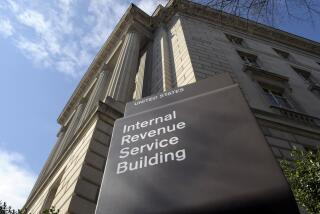Counties brace for huge tab
Four days after Hurricane Charley slashed through Central Florida, local governments are struggling to get a grip on the price of cleaning up the mess and repairing the damage.
That figure is expected to reach in the billions statewide.
But officials say it will take weeks or months to determine the real costs.
“It’s still early,” said Eric Poole, a governmental liaison official with the Florida Association of Counties. “They’re still doing the preliminary damage estimate. I’m seeing [statewide] numbers from $5 billion to $15 billion.”
So far, Orange County officials say they are looking at up to $1.5 billion in damage to homes, businesses and government operations. Osceola projects $25 million, but officials say that figure is tentative.
Volusia County and its cities expect about $22 million in damage, while Seminole and its municipalities are facing at least $13.5 million in costs.
Orlando, Winter Park, Belle Isle and Oviedo say it’s too early to predict damage and cleanup costs because they are still trying to dig out from fallen trees that caused widespread disruption of power and phone service.
Winter Park, for example, has been focused on clearing debris from city roads. Tuesday, officials said, 26 streets and roads remain impassable, down from 200. The city also was working to repair more than 80 breaks in water mains.
“After Hurricane Erin [in 1995], it took us six weeks to haul away all the debris,” Assistant City Manager Randy Knight said. “And this is 10 times worse than Erin.
“Right now, we’re still in the ‘cut and shove’ stage.”
The federal government likely will cover up to 75 percent of the storm recovery costs, and the state will pay up to 12.5 percent for many emergency expenses.
The remaining shortfalls must be absorbed by government insurance policies, agency budgets and finally, general fund reserves, if needed.
“We have no clue on the dollar amount,” said Belle Isle City Manager Larry Williams, whose 41/2-square-mile city south of Orlando had 500 homes damaged by trees -- and many roads blocked.
“If we have to dip into reserves, we’ll do it. That’s what it’s for, a rainy day. But this was a big rainy day.”
Jurisdictions face a long list of potentially expensive repair projects.
On Tuesday, Orlando city officials announced the temporary closing of Leu Gardens, a 50-acre botanical garden and park which lost more than 100 trees, many planted a century ago.
The TD Waterhouse Centre suffered roof and water damage to some skyboxes and will require a new roof, said Jon Dorman, deputy director of Orlando Centroplex operations.
A motocross and skateboard event scheduled for Saturdaydubbed Central Florida Extreme II, was postponed, Dorman said.
The Citrus Bowl also suffered minor damage to portable concession stands, signs, awnings and a fence, he said.
With expenses hitting city and county governments for everything ranging from tree-removal contractors to power generators, ice and overtime for emergency workers, municipalities are writing checks now -- and will worry where the money comes from later.
Ultimately, they’ll get help making ends meet.
Federal Emergency Management Agency officials said they will cover 100 percent of the costs incurred during the first 72 hours.
“This isn’t a free event,” Jay Goldrick, risk manager for Orlando. “Eventually, it’s going to cost the city some money.”
FEMA helps pay to repair roads, water systems and other public systems. It also aids in the cost of debris cleanup and keeping extra emergency personnel on duty.
Bills will start piling up over the coming weeks and months. Several jurisdictions have deals with firms specializing in storm cleanup.
The mess is already stacking up.
In the days after Charley, the Tomoka Landfill in Volusia County received 4.3 million pounds of yard debris. That was twice the amount of all garbage received on a normal day.
Scales are weighing 600 truckloads each day, and the number continues to grow.
Orange County officials, meanwhile, are estimating cleanup crews will collect up to 200,000 dump trucks full of debris.
Because the county landfill can’t handle that amount, officials are working to obtain permits to begin burning yard waste.
No one at this point can say how long or expensive the job may be.
“We’re not sure how to assess that,” said Knight, the Winter Park assistant city manager. “Let’s just say we’re going to need a lot of dump trucks for a long time.”
Melissa Harris, Gary Taylor, Susan Jacobson, Ludmilla Lelis, Kyle Hightower, Rene Stutzman, Tammie Wersinger and Patricia Xavier contributed to this story. Jim Leusner can be reached at jleusner@orlandosentinel.com or 407-420-5411. Jim Stratton can be reached at jstratton@orlandosentinel.com or 407-420-5379.
More to Read
Start your day right
Sign up for Essential California for news, features and recommendations from the L.A. Times and beyond in your inbox six days a week.
You may occasionally receive promotional content from the Los Angeles Times.






